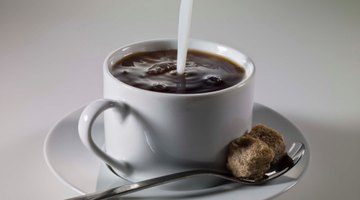How to Know if There Is Lead in Your Coffee Cups
Many ceramic and painted dishes manufactured before 1977 contain small amounts of lead. In some cases, lead may leech into food or drinks served in these dishes. While each dose of lead is likely to be minuscule, it is still a serious concern.

Things You Will Need
- Distilled water
- Home lead testing kit
Tip
Moisten the test swabs with distilled water rather than tap water to help prevent a false positive. Carefully read the packaging of the lead test kits available and purchase the one capable of detecting the lowest concentrations of lead. Less accurate kits may be unable to detect dangerous levels of lead. Some testing kits require test swabs to be mailed to a lab for testing. Consult the packaging carefully to ensure that you are getting the type of test you want. Lead testing kits can only confirm the presence of lead, not the amount. For more accurate results, dishes can be sent to a lab to be more accurately tested for a fee.
Warning
Lead is a dangerous and cumulative toxin. If any of your coffee cups contain lead, they should not be used, especially by children.
Even if your cups are lead-free, older dishes may contain other toxins such as cadmium. A negative result on a lead test is not a guarantee of safety.
Lead is a cumulative toxin, which means that it is not excreted from the body and builds up over the entire lifetime of the person ingesting it. Lead has been linked to serious physical and mental damage, particularly in those who were exposed to it as children. Coffee cups are especially vulnerable to lead leaching, as the low melting point of lead makes it more active in the presence of hot liquids. Fortunately, you can easily find out if there is lead in your coffee cups with a home testing kit, available at hardware stores.
-
Clean the coffee cups you wish to test thoroughly. Once they are clean, rinse them with distilled water. This will prevent environmental factors from causing a false positive.
-
Swab the inside of the coffee cup with a moist test swab from the lead testing kit. Most non-scratch testing kits will require you to rub the swab over the surface for a minute or two.
-
Apply the test swab to the testing card. Consult the kit's instructions to translate the results.
References
Photo Credits
- Jupiterimages/Comstock/Getty Images
- Jupiterimages/Comstock/Getty Images
More Articles



